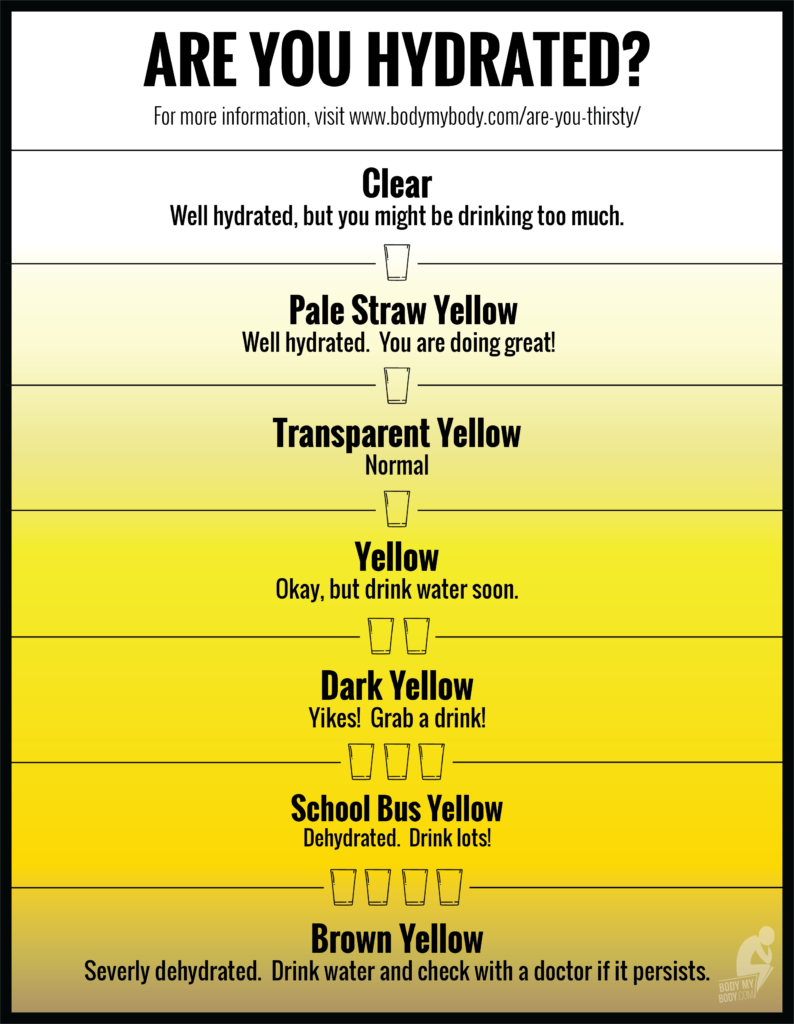Weak, slow, stiff, sluggish, and out-of-it. No thanks!
Did you know that if you’re not hydrating right, you’ll end up with these unwanted feelings? And they have the power to undermine your workout.
I’m not saying that being properly hydrated is the only factor. But it’s an important one that you may have been neglecting around your workout. And likely you’re entire day.
We know that working your muscles demands water. And lots of it, considering that water makes up 75% of the volume of your muscle mass.
Even the slightest dehydration (≥ 2% body weight loss) adds stress to your internal environment. And that takes away the resources your body needs to perform during your workout and to recover between sets and afterwards.
The solution seems simple. Drink more water, right?
Not so fast.
Taking in too much water around your workout can be detrimental to your results.
The key is to adjust your water intake based on your individual needs, such as:
- Your thirst
- Your fitness level
- Your body size and gender
- The number of hours you’re awake
- The humidity and air temperature where you are
- The duration and intensity of your daily activities
Follow these 5 hydration guidelines to stay out in front:
1. Track your water intake
Journaling how much water you drink in a day can help you to be more mindful. Fill up a reusable water bottle throughout the day. Then you can keep count using an app like Waterlogged.
2. Urine Color Test (PCT)
The color of your first urination in the morning is a good measure of how well you’ve been hydrating.
Identify your urine color each morning to understand if what you’re doing is working or not.
If it’s straw or lemonade color, then you’ve done well. But if it’s darker than that, then you’re leaning towards dehydration.
If you’re urine is bright yellow, it’s likely from a vitamin supplement you’re taking.
3. Timing (general recommendation)
Preparation means prevention. Experiment using consistent hydration intervals for a couple of weeks to learn what works best for you.
For example, try drinking around 4 oz of water every 30-minutes, leading up to the start of your workout, and thereafter. And then journal any changes in your energy, urination frequency, and workout performance.
This steady consumption can help prevent dehydration, over-hydration, heat illness, and injury. And you’ll spare yourself of all the discomfort that comes along with them.
If you workout first thing in the morning, try to give yourself at least an hour beforehand to get in 8 ounces of water. Two hours is ideal for a full 16 oz.
For the evening time, you can cut back the water if you find yourself frequenting the bathroom in the middle of the night.
4. Rest Periods
Keep your reusable water bottle with you to sip on during rest periods. It’s a good habit to include right after you catch your breath.
If you find that you’re gulping water, that could be a sign that you didn’t hydrate well enough beforehand.
5. Post-Workout Hydration
And finally, hydrate well after you exercise. If you sweat more than average, then you’ll want to replace what you lose.
Record your weight in the nude before you workout, and again after.
Then you can start to find out your hourly sweat loss using this calculation:
– Add back any fluid you took in during the workout and divide the amount of weight lost by the time in hours that you were out.
Here’s an example to replace it:
If your sweat rate is 2 litres/hour and you exercise for 1 hour, and consume 500ml of fluid, your deficit will be 1.5 litres. So you could aim to consume 125-150% of this deficit (1.9-2.3 litres) in the post-workout. And make sure to space that out over the next 2-3 hours.
Applying the above tips will help give you a peace of mind that you’re setting your body up for success.
For more tips like this, subscribe to my YouTube channel to help you become an athlete for life.
Until next time, stay athletic.
Your coach,
Adam

